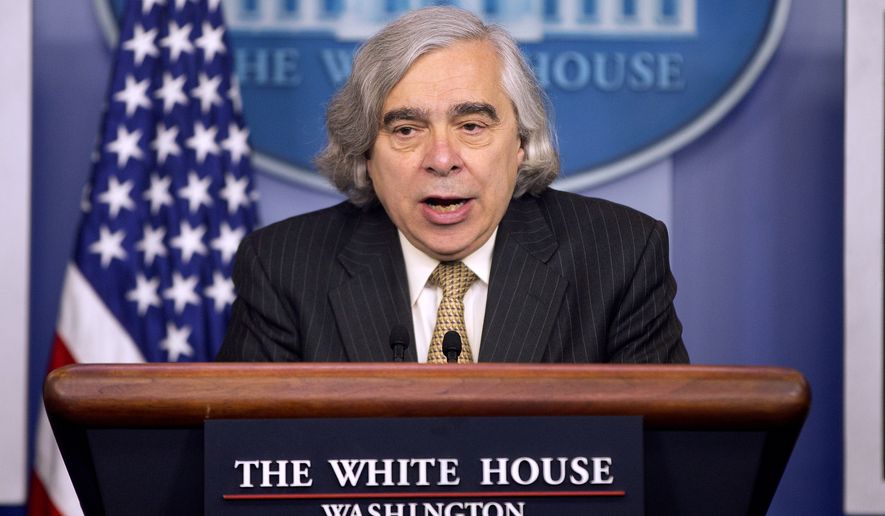ANALYSIS/OPINION:
It’s not often that I’m the subject of tweets from the State Department, but late last week spokeswoman Marie Harf tweeted that “Former @CIA Director Mike Hayden says he’s ’heartened’ by details of Iran deal; ’no good alternatives’ to diplomacy.”
Well, not exactly.
Marie, who worked in my public affairs shop at CIA, was referring to an interview I had given Friday morning on Fox News. There I said that nothing I had seen in the American statement on the outcome of the negotiations was in my mind automatically “disqualifying” and, since it was more than I thought we would demand, I was in that sense “heartened.” Chalk that last comment up to low expectations.
I then went on to say that we did not, in fact, have a deal and that nobody had signed anything. I added that we had probably just finished the first quarter of a long game, but that I was willing “to give it some time to get it to the right place.”
So what is a right place? And, equally important, where are we now?
The Iranian description of the Lausanne outcome was painted with a broad brush and bright strokes: We got respect; our nuclear program is now internationally legitimate; we will not have to close anything; we will not have to ship anything out of the country; sanctions are going to be lifted. It all actually fits on a three-by-five card.
The American description of Lausanne takes four single-spaced pages of details and can be best summarized by “Yes, but .”
The facility at Fordow remains, but it cannot be used to enrich uranium for 15 years. The reactor at Arak will be redesigned so that it cannot produce weapons-grade plutonium. Natanz gets to keep 5,000 centrifuges, but they will be of an older, inefficient type. All of this bears the mark of the highly regarded secretary of energy, Ernest Moniz, who took a powerful hand in the negotiations.
To be fair, it appears that the Americans got most of the science right. It is probably also fair to say that the Iranians got most of the politics right. Hence, the celebrations in Tehran.
And now what of the way ahead? There is still much to be settled, including whether the American description of the framework will actually be seconded by the Iranians.
White House spokesman Josh Earnest also talked about the most intrusive inspection regime in history. That is probably a bit of hyperbole, but there may indeed be a tough regime for Iran’s known facilities. Frankly, though, the International Atomic Energy Agency smothering locations we know about isn’t all that comforting. The inspectors need to be able to go anywhere at any time, since American intelligence has always assessed that weapons-grade enrichment would take place at some covert location. Watch this space. If inspectors cannot quickly go to military or Revolutionary Guard facilities inside Iran, there will be a gaping hole in the inspection regime.
We should also keep an eye on what happens to learning about PMDs, the “previous military dimensions” of the Iranian program. The 2007 National Intelligence Estimate that said Iran had paused its nuclear weaponization work also reported with high confidence that such work had been going on through 2003. How far did they get? That’s an important question, but I fear that the Iranians will never answer it and we will not insist that they do. Watch that space, too.
The whole issue of sanctions relief for Iran remains clouded. How quickly will they be lifted and under what conditions? Then there is the question of disentangling nuclear-related sanctions from those that have been imposed for a whole variety of other Iranian wrongdoings. With the dynamic that will be created by any sanctions relief, will it even be possible to keep other meaningful measures in place?
Finally, what of the “snapback” sanctions that the administration has confidently predicted will occur if Iranian cheating is detected? How do they snap back? If that requires an affirmative U.N. Security Council vote, the chances are nil. One formula would be to merely suspend any sanctions and require a periodic vote to keep the suspension in place. That would allow any member of the Permanent Five to re-impose restrictions by simply refusing to endorse a continuation. Let’s see if that’s the structure that will be built.
So there is a lot left to be done here before we have a deal, and I did indeed say there were no good alternatives. But, contrary to what the president has claimed, there are alternatives between this deal and war. And we still have it within our ability to make this deal so bad that those other “not good” options would actually be better than this one.
Of course, the administration’s singular focus on this deal would make moving to a Plan B very difficult. After all, the United States has already conceded Iran the right to enrich and walked back from Mr. Obama’s position that the facilities at Fordow and Arak were not legitimately part of a peaceful nuclear program. But such a dilemma would be of our own making and is hardly sufficient justification for accepting a bad deal.
So my council is: Give this some time to get it to the right place. We are not there, certainly not yet. And much of the heavy lifting is still in front of us.
• Gen. Michael Hayden is a former director of the CIA and the National Security Agency. He can be reached at mhayden@washingtontimes.com.
• Mike Hayden can be reached at mhayden@example.com.




Please read our comment policy before commenting.